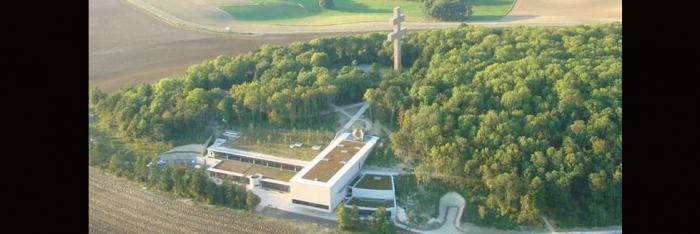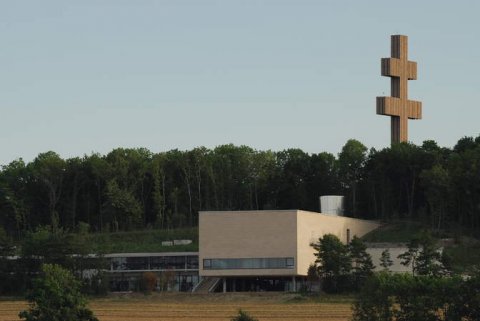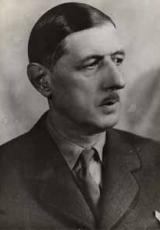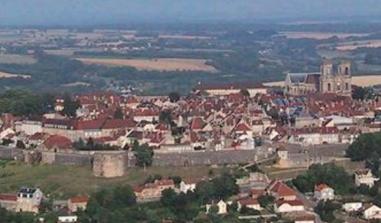Colombey-les-deux-églises, a walk of remembrance
Situated at the foot of the Croix de Lorraine in Colombey-les-deux-Eglises, the Charles de Gaulle memorial completes a walk of remembrance consisting of the family residence, La Boisserie and the de Gaulle family tomb, a place for contemplation, steeped in austerity.
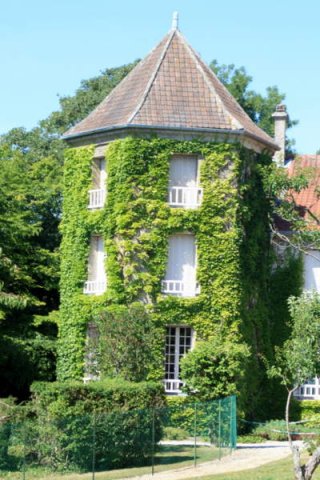
La Boisserie. Source : Charles de Gaulle memorial
The village of Colombey-les-deux-Eglises is famous for having been chosen by General de Gaulle as the site of his family home, La Boisserie, on 9th June 1934. The main place of contemplation and writing of the man who made the call of 18th June, La Boisserie immerses the visitor in its family atmosphere, stamped with simplicity. Open to the public, visitors can tour the dining room and lounge, admire the view from the office and immerse themselves in the private life of Charles de Gaulle and his family.
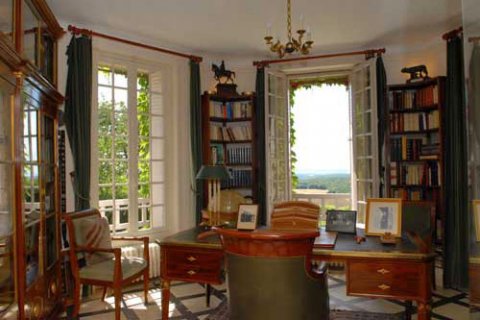
Office of Charles de Gaulle in la Boisserie. Source : photo Philippe Lemoine
Charles de Gaulle memorial, life-size history
However, the one thing was lacking to help visitors understand the man; the Memorial fulfils this role.
More than a traditional presentation of the first President of the Fifth Republic, the Memorial is a meeting with the history of the twentieth century and a meeting with the private side of a man. It presents the different facets of Charles de Gaulle: the writer, the father, the politician, the leader of France Libre, the private man, etc.
The letters to his wife Yvonne, his thoughts on the disability of his daughter, Anne, but also the relations he maintained with the residents of Colombey gradually reveal a different de Gaulle to that so often portrayed.
A place of living history, the Memorial features a wide variety of media and décor, arranged by Geneviève Noirot and Christian Le Conte: films on giant screens, décors, multimedia terminals, sound creations, written comments, dioramas, sound and audio-visual archives which decorate a building designed by the architects of the Memorial of Caen, Jacques Millet and Jean-Côme Chilou.
Guided tour of the permanent exhibition
As the tour progresses, the meeting with history is provided through the man.
The permanent exhibition, developed by a scientific council chaired by historian Frédérique Dufour, is divided into time sequences going back to specific periods in the life of Charles de Gaulle: his childhood, the First World War, the 1930s in Colombey-les-deux-Eglises and the inter-war period and his military theories.
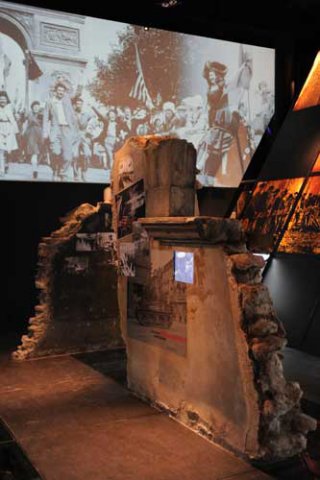
The memorial - permanent exhibition. Source : photo Philippe Lemoine
Then there is the period of rising danger and the Second World War, presented at the Memorial in different angles: the War of the airwaves, the combats of France Libre, the Resistance and then the Liberation.
For Charles de Gaulle, the ensuing period consisted in the desert crossing and daily life in Colombey-les-deux-Eglises before returning to power in 1958 and the creation of the 5th Republic.
The exhibition also develops themes related to the thirty glorious years between 1945 and 1975, May 68 and Charles de Gaulle's exit from the Elysée, ending finally with his funeral and the memory that surrounds the character today.
The Educational Department
The Educational Department at the Charles de Gaulle memorial, consisting of two history-geography teachers, continues the objective to facilitate transmission of knowledge on the life, work and action of General de Gaulle.
It offers schools the keys with which to understand how General de Gaulle's actions are rooted in History. To do this, it gives teachers learning tools, in relation with the official curriculum of the National Education department. This instruction in history and civic education is based on the permanent and temporary exhibitions presented at the Memorial.
To ensure school groups receive the best possible service, the Charles de Gaulle memorial has a documentation centre and two educational rooms equipped with computers, a projector and an interactive whiteboard.
Kits
Educational kits are provided to teachers. These tools assist students through the exhibition. They also allow them to familiarise themselves with and to summarise the content of the exhibitions. In relation with the official history-geography and civic instruction curricula of the National Education department, they are adjusted to the students' level: primary, secondary, college or sixth form and vocational college.
Educational walks
The walks are led by a Memorial teacher, who can provided a general or more detailed approach of the exhibitions.
Educational workshops
During workshops, students can gain a deeper understanding of a theme based on researching and analysing documents. These workshops encourage students to think and to develop a critical approach and they encourage them to put things into their historical context.
The Educational Department of the Memorial also offers support to teachers in their development of projects.
Through developing a common topic or establishing links between different disciplines, they can give meaning to their teachings and get students involved more.
The Memorial also offers:
A Documentation centre
The documentation centre is the largest bibliographical collection on General de Gaulle after that of the Fondation Charles de Gaulle in Paris. It is open to all visitors wanting to learn more from their visit by reading up on the character and on modern history. It is also ideal for more advanced research dealing with the life and actions of Charles de Gaulle.
The opportunity to organise seminars, general assemblies and conferences.
The Memorial's amphitheatre, accommodating 194 people, or one of the commission rooms are available to rent for particular occasions.
The possibility to read up on the Haute-Marne and its tourist sites
Practical information
Mémorial Charles de Gaulle
52330 Colombey-les-deux-églises
Tel.: +33 (0)3 25 30 90 80
Fax: +33 (0)3 25 30 90 99
Educational Centre Team
Céline Anché
Telephone: +33 (0)3.25.30.90.96
Mobile: +33 (0)6.73.39.48.41
Fax: +33 (0)3.25.30.90.99
Courriel : celine.anche@memorial-charlesdegaulle.fr
Booking service
Françoise HARANT - Tel.: +33 (0)3.25.30.90.84
francoise.harant@memorial-charlesdegaulle.fr
Thomas WAUTHIER - Tel.: +33 (0)3.25.30.90.86
thomas.wauthier@memorial-charlesdegaulle.fr
Open
From 1st May to 30th September, every day from 9.30am to 7pm.
From 1st October to 30th April, every day except Tuesday from 10am to 5.30pm.
Yearly closure: January and the first week in February
Getting there
By road: Access by the A5
-From Paris: exit No. 23 Ville-sous-la-Ferté, follow Bar-sur-Aube, then Colombey-les-deux-Eglises
-From Lyon: exit No. 24 Chaumont-Semoutiers, follow Chaumont, then Colombey-les-deux-églises
By train: Get off at Chaumont
A special rate on the TER train and for the Charles de Gaulle Memorial is available for TER Champagne-Ardenne users. Information on 0891 671 008
By bus: from Chaumont and neighbouring towns, there is on on-demand shuttle bus that follows a pre-defined circuit. Bookings must be made at least 48 hours in advance from Proxibus on 0 800 23 50 37 or 03 25 01 88 42
